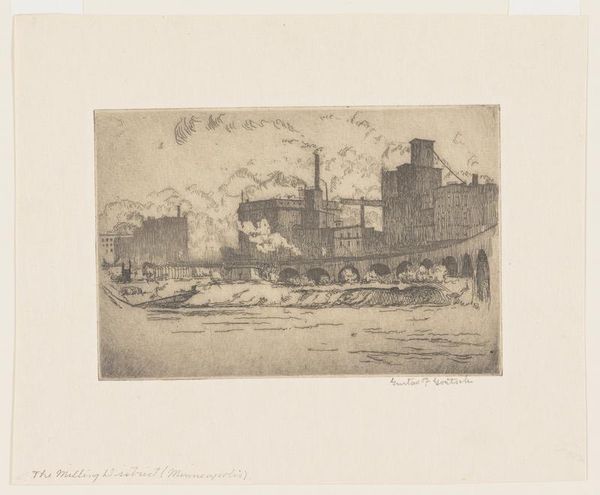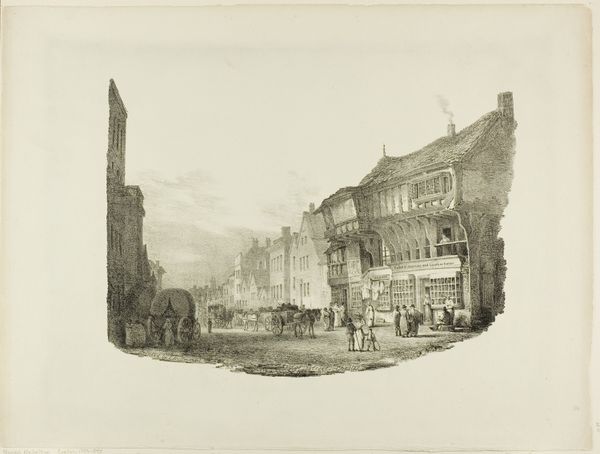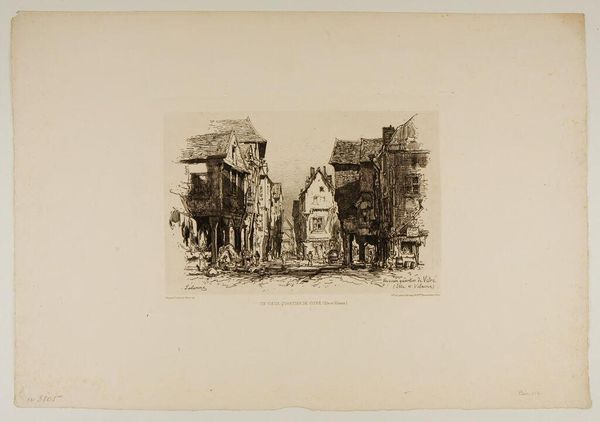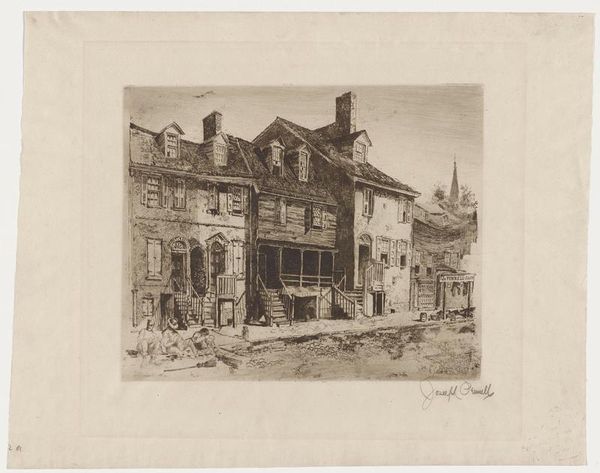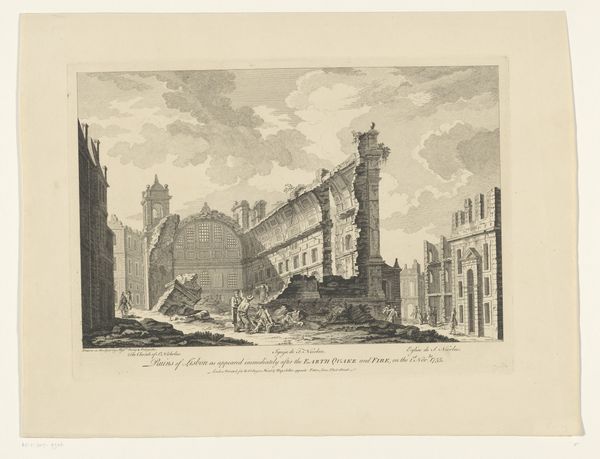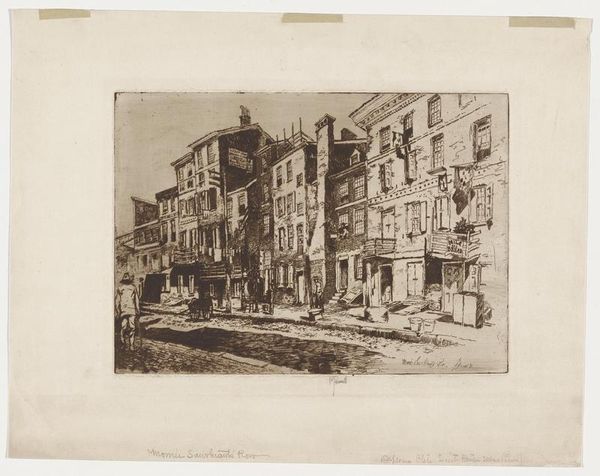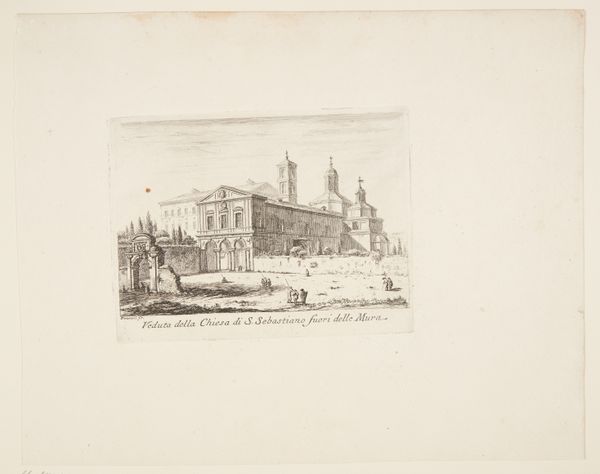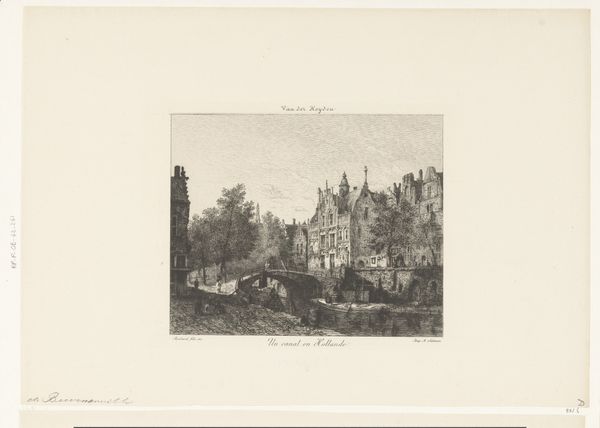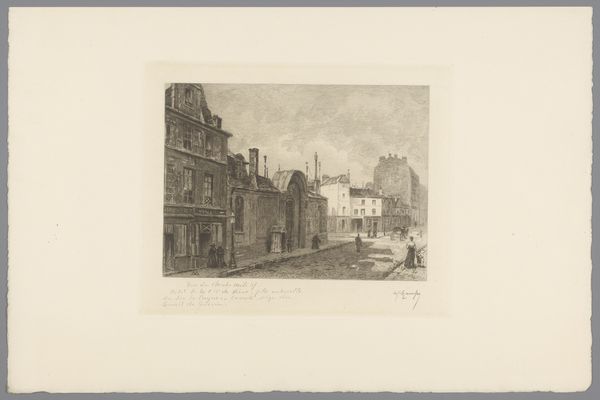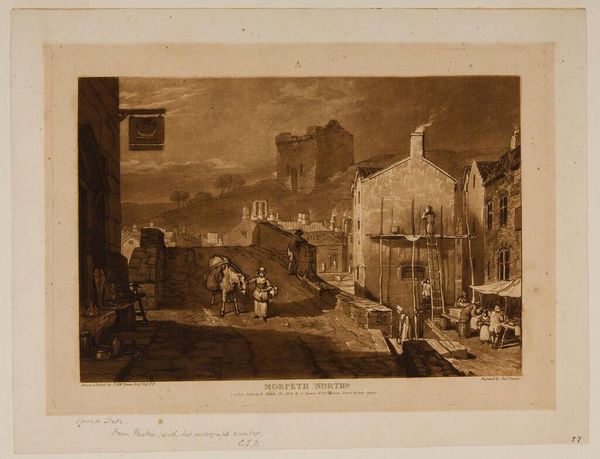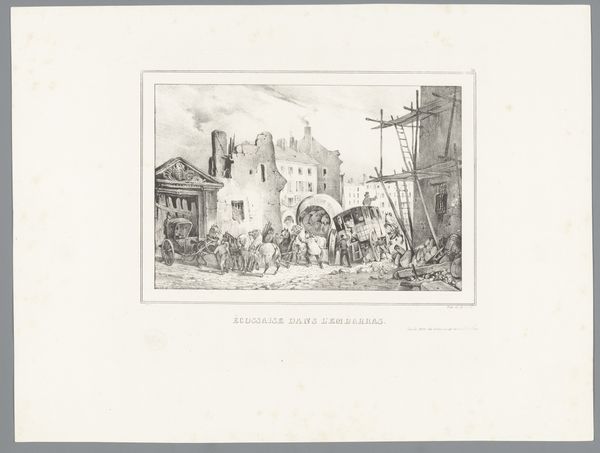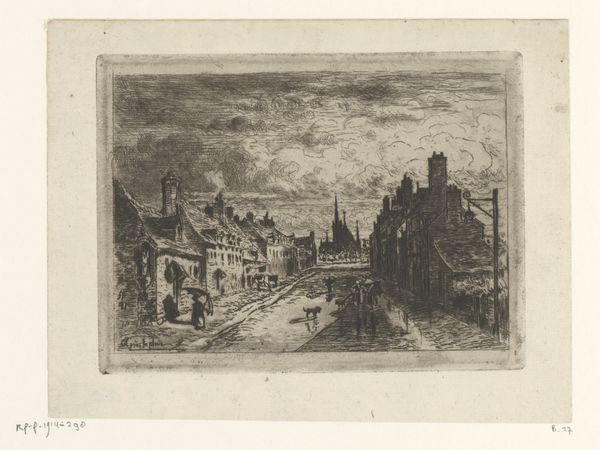
drawing, print, etching, paper
#
drawing
# print
#
etching
#
pencil sketch
#
paper
#
cityscape
#
realism
Dimensions: 3 7/8 x 6 7/8 in. (9.84 x 17.46 cm) (plate)7 5/8 x 9 1/8 in. (19.37 x 23.18 cm) (sheet)
Copyright: No Copyright - United States
Curator: Here we have Gustav Goetsch’s “Third Avenue,” a cityscape etching, dating from the 20th century. Editor: Immediately, I see a scene steeped in an atmosphere of industry and quiet solitude. The sharp lines suggest a hidden history and a tangible connection to labor and progress. Curator: Exactly. Goetsch, though not as famous as some of his contemporaries, played a vital role in documenting the changing urban landscape. This print is a part of that legacy, capturing the gritty reality of a city in transition. The deliberate lack of idealized beauty points to a conscious effort to depict the area truthfully. Editor: Yes, and even the layout holds symbolic weight. The building on the left extends in a rather long row. This linearity could represent the restrictive nature of industry but could it also evoke ideas about community due to the sheer magnitude of the edifice? The light barely touches it at all. This choice lends to my earlier impression of industrialism; this is not a lighthearted portrait of life. Curator: An interesting consideration of symbolic elements within a seemingly realistic cityscape. Consider that during Goetsch’s time, rapid urbanization reshaped the very fabric of American society. The city itself was transforming the cultural life and lived experiences of inhabitants and Goetsch illustrates that here. He isn’t selling dreams or aspirational narratives, rather depicting the new normal. Editor: The smoke coming out of the water tower and smokestacks are telling. They function as strong directional tools but what they reveal is of greater significance than their mere pictorial value. Curator: Agreed. The scene speaks volumes about the changing economic structure as well. These kinds of buildings became symbolic representations of urban strength and economic power. Goetsch really captured something special here. Editor: Overall, “Third Avenue” leaves me contemplating our relationship with progress. What aspects of our social contract do we sacrifice for modernization, and is the bargain ultimately worth the cost? Curator: I'd say it’s a somber yet enlightening study of urban life, prompting dialogue about the complex relationship between social progress and human experience.
